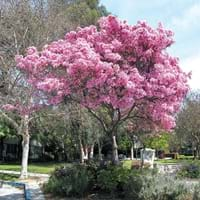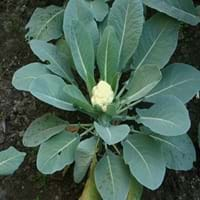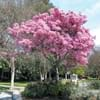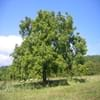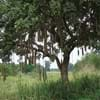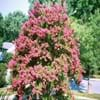Origin
Caribbean
Europe, Mediterranean, Canary Islands, Northern Africa
Types
Not Available
Broccoflower, Green Cauliflower
Habitat
Rainforest
Farms, Mountains
USDA Hardiness Zone
10-14
1-11
Sunset Zone
H1, H2, 15, 16, 20, 21, 22, 23, 24
A1, A2, A3, H1, H2, 1a, 1b, 2a, 2b, 3a, 3b, 4, 5, 6, 7, 8, 9, 10, 11, 12, 13, 14, 15, 16, 17, 18, 19, 20, 21, 22, 23, 24
Habit
Upright/Erect
Rosette/Stemless
Minimum Height
Not Available
Minimum Width
Not Available
Flower Color
Pink, Rose
Yellow
Flower Color Modifier
Bicolor
Bicolor
Fruit Color
Brown
Not Available
Leaf Color in Spring
Green, Light Green
Not Available
Leaf Color in Summer
Green
Red, Purple, Blue Green, Gray Green, Dark Green
Leaf Color in Fall
Green
Red, Green, Purple, Blue Green, Gray Green, Dark Green
Leaf Color in Winter
Not Available
Red, Purple, Blue Green, Gray Green, Dark Green
Plant Season
Spring, Winter
Spring, Summer, Fall, Winter
Sunlight
Full Sun, Partial Sun
Full Sun, Partial Sun
Type of Soil
Clay, Loam, Sand
Loam, Sand
The pH of Soil
Acidic, Neutral, Alkaline
Neutral, Alkaline
Soil Drainage
Well drained
Well drained
Bloom Time
Early Spring, Late Winter
Spring, Late Spring, Early Summer
Tolerances
Drought, Salt
Drought, Salt
Where to Plant?
Ground
Ground
How to Plant?
Seedlings
Seedlings, Transplanting
Plant Maintenance
Medium
Medium
Watering Requirements
occasional watering once established
Keep the ground moist but not water-logged, Never Over-water, Requires a lot of watering, Requires regular watering, Requires watering in the growing season
In Summer
Lots of watering
Lots of watering
In Spring
Moderate
Moderate
In Winter
Average Water
Average Water
Soil pH
Acidic, Neutral, Alkaline
Neutral, Alkaline
Soil Type
Clay, Loam, Sand
Loam, Sand
Soil Drainage Capacity
Well drained
Well drained
Sun Exposure
Full Sun, Partial Sun
Full Sun, Partial Sun
Pruning
Remove damaged leaves, Remove dead branches, Remove dead leaves
Remove dead leaves
Fertilizers
All-Purpose Liquid Fertilizer
All-Purpose Liquid Fertilizer
Pests and Diseases
Red blotch
Red blotch
Plant Tolerance
Drought
Drought
Flower Petal Number
Single
Single
Foliage Texture
Medium
Bold
Foliage Sheen
Glossy
Matte
Attracts
Not Available
Insects
Allergy
Diarrhea, Dizziness, High blood pressure, Nausea, Vomiting
Asthma, breathing problems, Itchiness, Swelling in the face
Aesthetic Uses
Used in parkland
Not Used For Aesthetic Purpose
Beauty Benefits
Not Available
Not Available
Environmental Uses
Air purification
Air purification
Medicinal Uses
Anemia, Antibacterial, Bronchitis, Cancer, Candidiasis, Detox
anti-cancer
Part of Plant Used
Flowers
Flowers
Other Uses
Showy Purposes
Economic Purpose, Employed in herbal medicine, Used As Food
Used As Indoor Plant
No
No
Used As Outdoor Plant
Yes
Yes
Garden Design
Feature Plant, Shade Trees, Street Trees, Tropical
Bedding Plant, Container, Edible, Herb / Vegetable
Botanical Name
HANDROANTHUS heptaphyllus
BRASSICA oleracea
Common Name
Pink Tabebuia, Pink Trumpet Tree
Broccoli, Cabbage, Cauliflower, Collards, Kale, Kohlrabi
In Hindi
pink trumpert tree
फूलगोभी
In German
Rosa Baum Trnpert
Blumenkohl
In French
Rose Arbre Trnpert
Choufleur
In Spanish
Pink Trnpert Árbol
Coliflor
In Greek
Ροζ Tree Trnpert
Κουνουπίδι
In Portuguese
Rosa da árvore Trnpert
Couveflor
In Polish
Różowe Drzewo Trnpert
Kalafior
In Latin
Pink arbor Trnpert
BRASSICA
Phylum
Magnoliophyta
Magnoliophyta
Class
Magnoliopsida
Magnoliopsida
Order
Lamiales
Brassicales
Family
Bignoniaceae
Brassicaceae
Clade
Angiosperms, Asterids, Eudicots
Angiosperms, Eudicots, Rosids
Tribe
Tecomeae
Not Available
Subfamily
Not Available
Not Available
Properties of Pink Trumpet Tree and Cauliflower
Wondering what are the properties of Pink Trumpet Tree and Cauliflower? We provide you with everything About Pink Trumpet Tree and Cauliflower. Pink Trumpet Tree doesn't have thorns and Cauliflower doesn't have thorns. Also Pink Trumpet Tree does not have fragrant flowers. Pink Trumpet Tree has allergic reactions like Diarrhea, Dizziness, High blood pressure, Nausea and Vomiting and Cauliflower has allergic reactions like Diarrhea, Dizziness, High blood pressure, Nausea and Vomiting. Compare all the properties and characteristics of these two plants. Find out which of these plant can be used as indoor plant. If you are interested to decorate your house and garden, find out aesthetic uses, compare them and select the plant which will beautify your surrounding. Along with beautification, try comparing medicinal and edible uses of Pink Trumpet Tree and Cauliflower and you can choose the plant having best and most benefits.
Season and Care of Pink Trumpet Tree and Cauliflower
Season and care of Pink Trumpet Tree and Cauliflower is important to know. While considering everything about Pink Trumpet Tree and Cauliflower Care, growing season is an essential factor. Pink Trumpet Tree season is Spring and Winter and Cauliflower season is Spring and Winter. The type of soil for Pink Trumpet Tree is Clay, Loam, Sand and for Cauliflower is Loam, Sand while the PH of soil for Pink Trumpet Tree is Acidic, Neutral, Alkaline and for Cauliflower is Neutral, Alkaline.
Pink Trumpet Tree and Cauliflower Physical Information
Pink Trumpet Tree and Cauliflower physical information is very important for comparison. Pink Trumpet Tree height is Not Available and width Not Available whereas Cauliflower height is 30.50 cm and width 30.50 cm. The color specification of Pink Trumpet Tree and Cauliflower are as follows:
Pink Trumpet Tree flower color: Pink and Rose
Pink Trumpet Tree leaf color: Green and Light Green
Cauliflower flower color: Yellow
- Cauliflower leaf color: Not Available
Care of Pink Trumpet Tree and Cauliflower
Care of Pink Trumpet Tree and Cauliflower include pruning, fertilizers, watering etc. Pink Trumpet Tree pruning is done Remove damaged leaves, Remove dead branches and Remove dead leaves and Cauliflower pruning is done Remove dead leaves. In summer Pink Trumpet Tree needs Lots of watering and in winter, it needs Average Water. Whereas, in summer Cauliflower needs Lots of watering and in winter, it needs Average Water.
